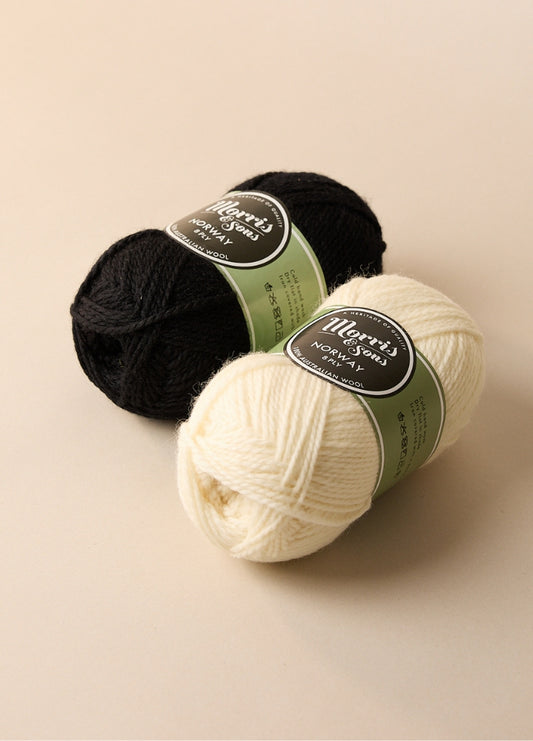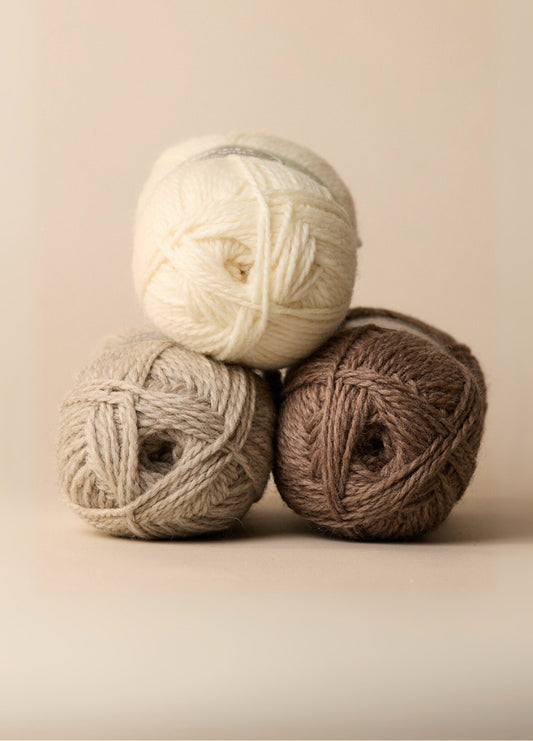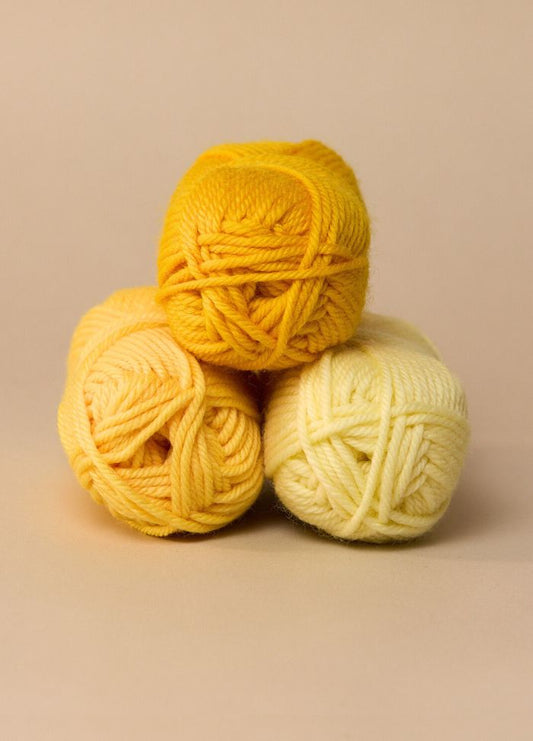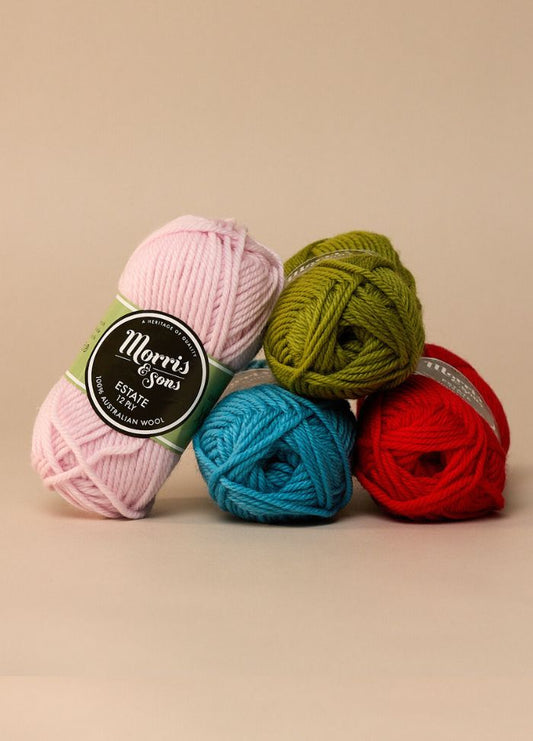Wool
One of the biggest benefits of wool is that it is breathable and wicks away moisture, keeping you dry and comfortable in every season. Wool yarn is also hypoallergenic and resistant to mould and bacteria that can trigger allergic reactions in people, making it the perfect choice for those who suffer from allergies.
The benefits of wool yarn
Wool has a natural elasticity, allowing it to stretch and flex. This reduces the likelihood of tearing and makes it ideal for knitting items where elasticity is important, such as gloves and jumpers. Its durability also means that it easily returns to its original shape and doesn’t crease when kept folded.
How to care for wool yarn
The natural antibacterial and odour-resistant properties of wool mean that you won’t have to wash it as regularly as your other clothes. When you do wash your knitwear, we recommend handwashing it using a gentle, wool-safe detergent and drying it flat, away from sunlight.
What is the difference between wool and Merino wool?
‘Merino’ refers to a breed of sheep, and ‘merino wool’ is the wool that comes from that breed. Merino wool has finer fibres and is less likely to cause irritation than coarser wool. Merino wool is also more lightweight compared to coarser wool and has superior moisture management.
What are the disadvantages of using wool yarn for knitting?
Some people may be sensitive to wool and find that the coarse fibres irritate their skin. Wool also requires particular care when washing, which may be time-consuming.
What is the difference between 100% pure wool and a wool blend?
Pure wool consists of wool only and does not contain any synthetic fibres, while wool blends are made from natural wool combined with synthetic fibres. At Morris and Sons, we include the composition of our wool blends in the product description, so you can the percentage of natural wool and synthetic fibres.
What is the best use of wool?
With all the benefits we’ve described above, it’s no wonder that wool is the most popular fibre among knitters around the world. Wool’s ability to keep you warm and dry makes it particularly well-suited for knitting winter clothes and accessories.
Selecting the right wool yarn for your next project
When selecting the right wool yarn for your next project, keep in mind that different types of wool give different textures and drapes. We recommend knitting a gauge swatch to help you decide whether the wool is right for your project and which needles you should use with it. For more advice on knitting a swatch, check out our blog To Swatch or Not to Swatch.
Shop our range of high-quality wool and yarns and supplies in-store or online and get started on your next project today!
One of the biggest benefits of wool is that it is breathable and wicks away moisture, keeping you dry and comfortable in every season. Wool yarn is also hypoallergenic and resistant to mould and bacteria that can trigger allergic reactions in people, making it the perfect choice for those who suffer from allergies.
The benefits of wool yarn
Wool has a natural elasticity, allowing it to stretch and flex. This reduces the likelihood of tearing and makes it ideal for knitting items where elasticity is important, such as gloves and jumpers. Its durability also means that it easily returns to its original shape and doesn’t crease when kept folded.
How to care for wool yarn
The natural antibacterial and odour-resistant properties of wool mean that you won’t have to wash it as regularly as your other clothes. When you do wash your knitwear, we recommend handwashing it using a gentle, wool-safe detergent and drying it flat, away from sunlight.
What is the difference between wool and Merino wool?
‘Merino’ refers to a breed of sheep, and ‘merino wool’ is the wool that comes from that breed. Merino wool has finer fibres and is less likely to cause irritation than coarser wool. Merino wool is also more lightweight compared to coarser wool and has superior moisture management.
What are the disadvantages of using wool yarn for knitting?
Some people may be sensitive to wool and find that the coarse fibres irritate their skin. Wool also requires particular care when washing, which may be time-consuming.
What is the difference between 100% pure wool and a wool blend?
Pure wool consists of wool only and does not contain any synthetic fibres, while wool blends are made from natural wool combined with synthetic fibres. At Morris and Sons, we include the composition of our wool blends in the product description, so you can the percentage of natural wool and synthetic fibres.
What is the best use of wool?
With all the benefits we’ve described above, it’s no wonder that wool is the most popular fibre among knitters around the world. Wool’s ability to keep you warm and dry makes it particularly well-suited for knitting winter clothes and accessories.
Selecting the right wool yarn for your next project
When selecting the right wool yarn for your next project, keep in mind that different types of wool give different textures and drapes. We recommend knitting a gauge swatch to help you decide whether the wool is right for your project and which needles you should use with it. For more advice on knitting a swatch, check out our blog To Swatch or Not to Swatch.
Shop our range of high-quality wool and yarns and supplies in-store or online and get started on your next project today!




